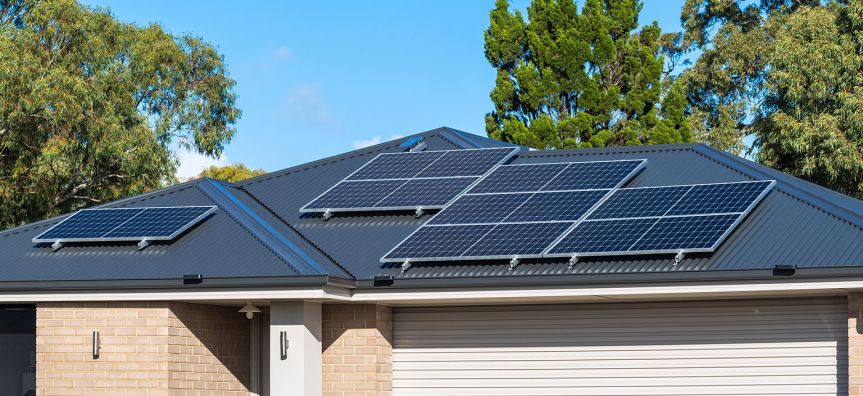
What to consider when getting a solar quote
To find a good solar installer, look for installers who are members of a consumer protection program like the New Energy Tech Consumer Code (NETCC) Program, run by the Clean Energy Council. The NETCC sets national standards to protect consumers purchasing new energy technology including solar systems. (Source: https://www.energy.nsw.gov.au/households/ways-get-started-households/home-solar-systems/home-solar-system-installation)
Before you approach a supplier consider the following information.
This will help your supplier design a suitable and economical solar system for your home and provide you with an accurate quote.
What should I ask in requesting a quote?
Before you receive the quote
Explain your primary reason for wanting to install solar (and a battery, where applicable). Outline what your expectations are of having a system installed.
- Are you after the quickest return on investment? Are you looking to install a battery in the future, or aiming to reduce your carbon footprint?
- If you are looking to install solar on an apartment building, there are more decisions to be made before requesting a quote. For example, is the system just to power common property or individual units? Check what is allowed in the current strata by-laws and speak with your strata manager.
Request a site visit
Request the solar supplier conduct a site visit prior to providing their quote, or at least prior to you signing a contract. This is so the supplier can accurately assess your home’s suitability and identify any extra costs before you commit.
- They should look at your meter and review any issues that can’t be seen in an aerial photo (which is how a desktop analysis is undertaken). They should also chat with you about your energy use and behaviours.
Provide electricity bill data
Provide them with a minimum of three months of electricity bill data, but ideally 12 months to show any seasonal variations in energy use.
Depending on your meter type, the solar provider may be able to access 30-minute interval data directly from your electricity retailer that will accurately demonstrate when your electricity is used throughout the day.
- They need this data to accurately size a PV system which fits your needs. If the system is too large it will take longer to pay back and if it’s too small you’ll be paying more on your bills than you should be.
- Your home’s electricity usage profile should be used for any calculations, rather than an estimate.
Check your feed-in tariff
Ask your current energy retailer what the solar feed in-tariff would be under your existing plan and check if an alternate plan would provide a better feed-in tariff.
Make sure you check any changes in your general usage electricity tariffs on any alternate plans.
You can use the Government’s Energy Made Easy energy plan comparison tool to compare energy provider plans (including the different tariff charges and feed-in tariffs).
What should a good quality solar quote provide me with?
Summary
A summary of the solar system your supplier is proposing, including;
- A diagram of the solar panel configuration on your roof and location of inverters.
- The system size in kW and average expected daily and annual energy yield in kWh.
Product details
- Details of the system components: panels, inverters, battery and monitoring system (if any).
- The name and serial numbers (so you can look them up for yourself on the Clean Energy Council’s website and verify them).
- Data sheets for solar panels and inverters. These will give you a better understanding of the efficiency of the products they have selected.
Costs
- A full itemised breakdown of the costs, including components, installation and any other additional fees (wiring or meter upgrades/ changes, monitoring, connecting to the grid, metering etc.).
- Any exclusions should be clearly outlined.
Payment options
Payment options clearly outlined namely:
- Is the system to be purchased outright, or is there an alternative payback method?
- How much is the required deposit for the system and when it must be paid by.
Calculations
Any data used in the calculations should be referenced including the discount amount derived from Small Scale Technology Certificates (a Federal Government rebate).
It should also be clear how they have calculated:
- the system size for your home
- the projected payback.
Warranties
Details of all the warranties and guarantees. Having a good understanding of the inclusions and exclusions is important especially if you run into an issue down the track with the system.
The following provides a guide to recommended warranty periods:
- Defects liability - 12 months
- Product warranty on PV modules - minimum 10 years
- Product warranty on inverters - minimum 5 years
- Product warranty on framing/ structures - minimum 10 years
- Performance guarantee on PV modules - 25 years
- Workmanship warranty - minimum 5 years.
Insurances
Insurance details should be provided including Professional Indemnity, Public Liability, Workers Compensation and Certificates of Currency for the contractor and sub-contractors.
Extra details
- Their full terms and conditions, not an abridged version. These should include who is responsible for each part of the process (installation, maintenance etc.).
- Their proposed works program.
- Confirmation of their accreditation. It’s important that the company you decide to go with are accredited designers and installers. You can then check their details on the Solar Accreditation Australia website.
What should I check before I accept a quote?
You should check:
- Online reviews of your solar supplier.
- How established is the supplier? e.g. how long have they been in business?
- Are the components of your system manufactured by well-known companies?
- Is your supplier providing a recent model? These will be easier to replace if necessary. You can check this on the data sheet(s) they provide in your quote.
- That their products are on the Solar Accreditation Australia website.
- Their electrical licenses via the Service NSW public register
